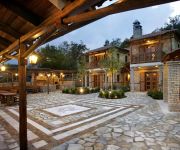Facts and Data
Webpages:
Official Unesco Page
Hellenic Ministry of Culture
Basis Data:
Unesco World heritage since: 1986
Size of heritage: 20 ha
- Buffer zone: 202 ha
Coordinates:
Longitude: 21,897°
Latitude: 37,435°
Summary
This famous temple to the god of healing and the sun was built towards the middle of the 5th century B.C. in the lonely heights of the Arcadian mountains. The temple, which has the oldest Corinthian capital yet found, combines the Archaic style and the serenity of the Doric style with some daring architectural features.
Location on Map
Show bigger map on Openstreetmap
Temple of Apollo Epicurius at Bassae: A Testament to Ancient Greek Architecture
The Temple of Apollo Epicurius at Bassae, located in the western Peloponnese region of Greece, is a UNESCO World Heritage site that stands as a testament to the ingenuity and architectural brilliance of ancient Greece. Situated in the prefectures of Messenia, Arcadia, and Ilia, this temple holds immense historical and cultural significance.
History
The construction of the Temple of Apollo Epicurius at Bassae dates back to the 5th century BCE, during the Classical period of ancient Greece. It was designed by the renowned architect Ictinus, who also contributed to the construction of the Parthenon in Athens. The temple was dedicated to Apollo Epicurius, the god of healing and protector against diseases.
Despite its remote location, the temple was highly revered and attracted pilgrims from far and wide. It served as a place of worship and healing, with people seeking solace and divine intervention for their ailments. The temple's remote location was believed to provide a serene and sacred atmosphere conducive to healing.
Over the centuries, the temple faced various challenges, including earthquakes, looting, and neglect. It was buried under rubble for centuries until its rediscovery in 1765 by a group of British antiquarians. The temple's significance was recognized, and efforts were made to restore and preserve this architectural marvel.
Architecture
The Temple of Apollo Epicurius at Bassae showcases a unique blend of architectural styles, combining elements of Doric, Ionic, and Corinthian orders. It is particularly renowned for its innovative use of the Corinthian order in the interior of the temple, making it one of the earliest examples of this architectural style.
The temple is constructed using local limestone, which has withstood the test of time remarkably well. Its intricate friezes and sculptures depict various mythological scenes and religious rituals, providing valuable insights into ancient Greek culture and beliefs.
Current State
Thanks to extensive restoration efforts, the Temple of Apollo Epicurius at Bassae stands proudly today, allowing visitors to marvel at its architectural grandeur. The temple was inscribed as a UNESCO World Heritage site in 1986, recognizing its outstanding universal value and the need for its preservation.
Visitors to the site can explore the temple's well-preserved ruins, including its columns, friezes, and sculptures. The serene surroundings and breathtaking views of the surrounding mountains further enhance the visitor experience, transporting them back to ancient Greece.
Efforts are ongoing to ensure the long-term preservation of the temple. Conservation measures, including regular monitoring, maintenance, and protection from natural elements, are in place to safeguard this invaluable cultural heritage.
The Temple of Apollo Epicurius at Bassae serves as a reminder of the remarkable achievements of ancient Greek civilization. Its architectural brilliance, historical significance, and cultural value make it a must-visit destination for history enthusiasts, architecture aficionados, and anyone seeking to immerse themselves in the rich heritage of Greece.
Hotels and places to stay
Abeliona Retreat
Videos from the area
Videos provided by Youtube are under the copyright of their owners.



